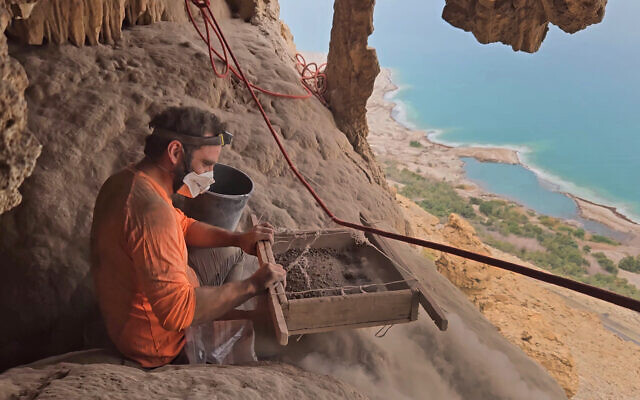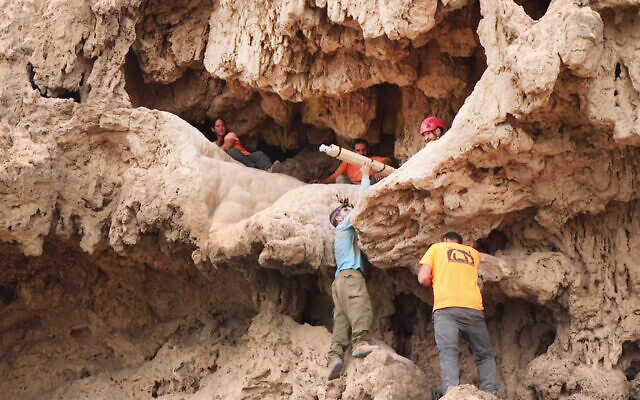Moroccan Jews have long traced their history back to refugees who fled west after Babylonian King Nebuchadnezzer destroyed the first Jewish Temple in Jerusalem in 586 BCE. Legends also abound about Jews visiting Morocco from the Land of Israel in Biblical times to purchase gold to bring back to Israel, or to fight the Philistines who’d been driven out of the Land of Israel. The oldest archaeological evidence of Jews in Morocco is ancient Hebrew-language tombstones in the ruins of the Roman town of Volubilis in Morocco.
One Medieval Islamic scholar, Ibn Khaldun (1332-1406) wrote that Jews became so numerous and influential in the area that Berber tribes converted en masse to Judaism. For generations, Khaldun’s assertion was taken as fact, and it was widely assumed that many Moroccan Jews had origins in local tribes. In recent years historians have largely debunked this claim, noting that Morocco’s Jews almost certainly descend directly from visitors from the Land of Israel.
Muslim Coexistence – and Pogroms
Morocco’s territory was largely conquered in the Seventh century CE by the fearsome Muslim warlord Abu al-Muhajir Dinar al-Ansari. He and his troops pressured local Berber leaders to convert to Islam, along with their tribes. Within a generation, the area of present-day Morocco became nearly entirely Muslim. The land’s substantial Christian community largely disappeared. Morocco’s Jews, however, resisted calls to convert, maintaining their distinct beliefs and lifestyles.
Muslim leaders largely tolerated Jews, imposing a “dhimmi” status on them. So long as Jews paid special dhimmi taxes and avoided prestigious professions, they were allowed to remain in Moroccan lands. The conditions Moroccan Jews faced varied. At times, they were allowed to live in Moroccan cities; at other times they were forced to relocate. Under the leadership of Yusuf Ibn Tashfin (c1061-1106) any Jew found to have stayed in Marrakesh overnight was put to death.
For Moroccan Jews, periods of relatively peaceful coexistence alternated with horrific anti-Jewish violence as anti-Jewish pogroms broke out during times of political and social tension. One pogrom in Fez in 1033 is thought to have killed over 6,000 Jews. A major pogrom broke out in Marrakesh in 1232. Some historians believe that another pogrom in Fez in 1465 killed nearly all of the city’s Jews.
In the 1400s, the Sultan took steps to protect Fez’s Jews, inviting them to live in a royal property called the Mellah. “Mellah” means salt in Arabic, and the land he allowed Jews to settle on is thought to have once been either a storehouse for salt or a place where saltwater was stored. Soon, other Moroccan cities established “Mellahs” of their own, including Marrakesh.
Welcoming Jews from Spain
Spanish Jews had long fled to North Africa during times of persecution in Spain. After the expulsion of all Jews from Spain in 1492, what had become a steady trickle of Jewish immigration into Morocco became a flood. Spanish (and later Portuguese) Jews poured into Moroccan Jewish communities; Marrakesh was a popular destination for these newcomers.
The Slat al-Azama Synagogue
It took generations for the two groups to mix. Jews who’d long lived in Morocco referred to themselves as
Toshavim: “residents.” Many spoke local dialects incorporating Hebrew and Moroccan Berber words. Spanish and Portuguese newcomers were known as
Megorshim: “those who were expelled.” They spoke different Arabic dialects as well as the distinctive Jewish language Ladino. The two Jewish communities lived side by side, but worshipped in their own synagogues which maintained different traditions. One of Marrakesh’s best-known and most beautiful synagogues, the Slat al-Azama Synagogue, was founded by Spanish Jews.
Flourishing Religious Life
Until the 1920s, Marrakesh’s Mellah was home to the largest Jewish community in all of Morocco, maintaining dozens of synagogues and schools. Marrakesh became an important local center for studying the Talmud and Kabbalah, or Jewish mysticism. While Jews in other Moroccan Mellahs suffered from waves of violence and intense poverty and prejudice, Marrakesh’s Jewish community fared better than most. Some local rulers unleashed violence on Marrakesh’s Jews. For generations, however, Jewish life and learning flourished. By the 1947 census, Marrakesh’s Mellah was home to over 50,000 Jews.
(full article online)
Morocco’s ancient Jewish quarter was severely damaged by Friday’s earthquake.

aish.com





















